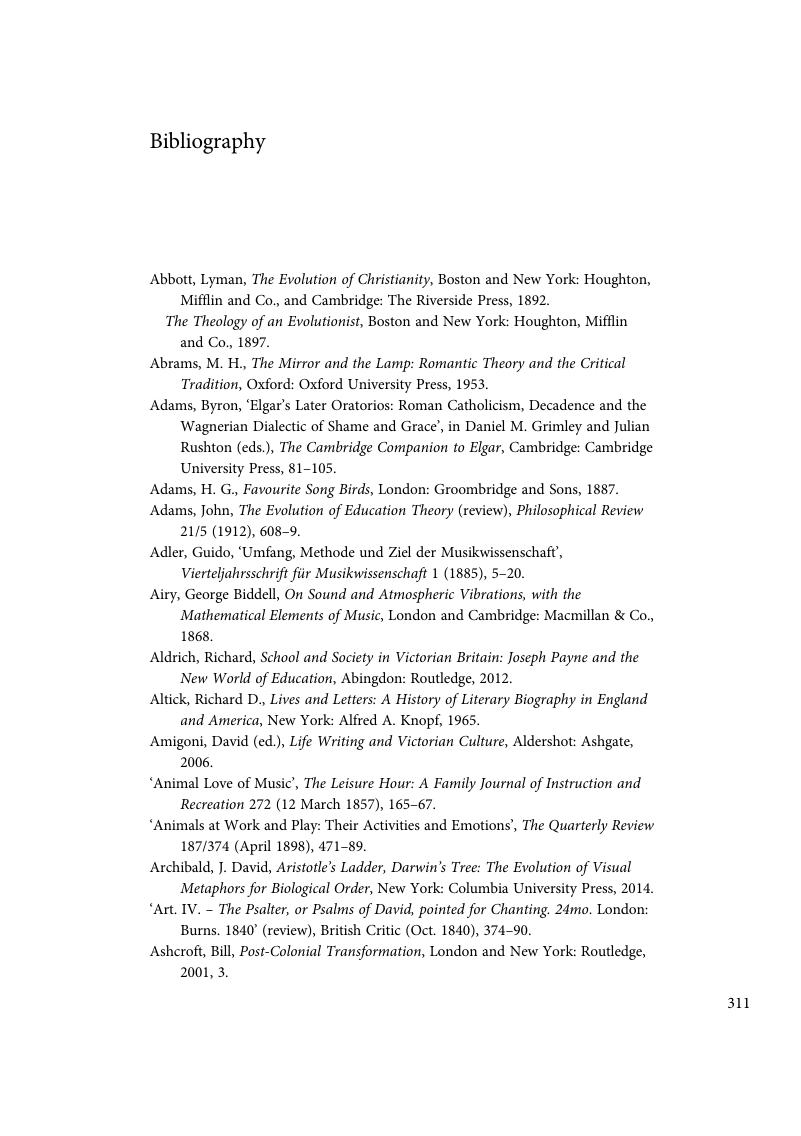Book contents
- Evolution and Victorian Musical Culture
- Evolution and Victorian Musical Culture
- Copyright page
- Dedication
- Contents
- Figures
- Acknowledgements
- Introduction
- 1 Zoomusicology
- 2 Ethnomusicology
- 3 Folk Musicology
- 4 Music Pedagogy
- 5 Music Biography
- 6 Music History
- 7 Music Theology
- Epilogue
- Bibliography
- Index
- References
Bibliography
Published online by Cambridge University Press: 25 October 2017
- Evolution and Victorian Musical Culture
- Evolution and Victorian Musical Culture
- Copyright page
- Dedication
- Contents
- Figures
- Acknowledgements
- Introduction
- 1 Zoomusicology
- 2 Ethnomusicology
- 3 Folk Musicology
- 4 Music Pedagogy
- 5 Music Biography
- 6 Music History
- 7 Music Theology
- Epilogue
- Bibliography
- Index
- References
Summary

- Type
- Chapter
- Information
- Evolution and Victorian Musical Culture , pp. 311 - 358Publisher: Cambridge University PressPrint publication year: 2017



